The Young Adult Market Report
All the stats you didn't know you wanted to know about the YA book market
I’m a Data Analyst by day and an author, well, whenever else I can sneak in some writing time. Before I embark on a new writing project, I usually do a deep dive to see where my shiny new idea fits into the current market. And since I figure some other authors and hopefuls might benefit from the info too, I always like to share my results. The following is an overview of Young Adult books published in 2023, the most recent complete year.
Side note: A lot of hours go into compiling all this data! If you find this stuff useful, please consider picking up one of my books or dropping me a virtual 5-star fist bump on Amazon or Goodreads.
Okay, commercial over, on to the good stuff!
1. How many Young Adult books were published in 2023?
Short answer: A LOT. My sample size started at almost 2,000 books! Which meant I had to cut some books to even make the analysis approachable. So I ended up setting a threshold of at least 10 Goodreads reviews at the time of the analysis, which left me with 615 total books including:
- 29 Graphic Novels
- 20 Novels in Verse
- 35 Debuts
- About twice as many books about witches as vampires (but more on that in my ranking of supernatural beings later…)
You can check out the full list of books here. Did I miss yours? Let me know and I’ll look into adding it!
2. Who are the top Young Adult publishers?
It’s probably no surprise to see in the pie chart below that the “Big 5” top the list in terms of number of YA books published. Penguin Random House took the top spota with a slim 3-book margin on HarperCollins. In comparison to Middle Grade where I’ve published so far, the “Other” category is a much larger piece of the market (20% YA vs 8% MG) with many small presses making up the balance of book releases.
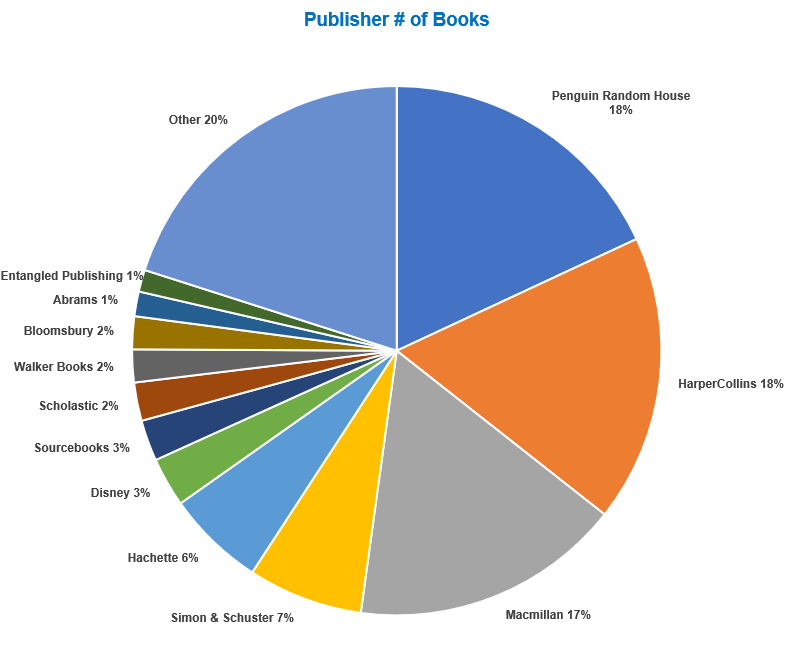
Though, interestingly, if you look instead through the lens of “count of reviews” as a proxy for popularity, you get a different picture of where the readers are (below). Entangled’s ascension in this view is, shall we say, carried on the wings of one MEGA seller, but putting that aside, I think the main takeaway here is that even though the YA market has a large ecosystem of publishers of various sizes, the lion’s share of readership still belongs to the big publishers (as evidenced by the “Other” category dwindling away).
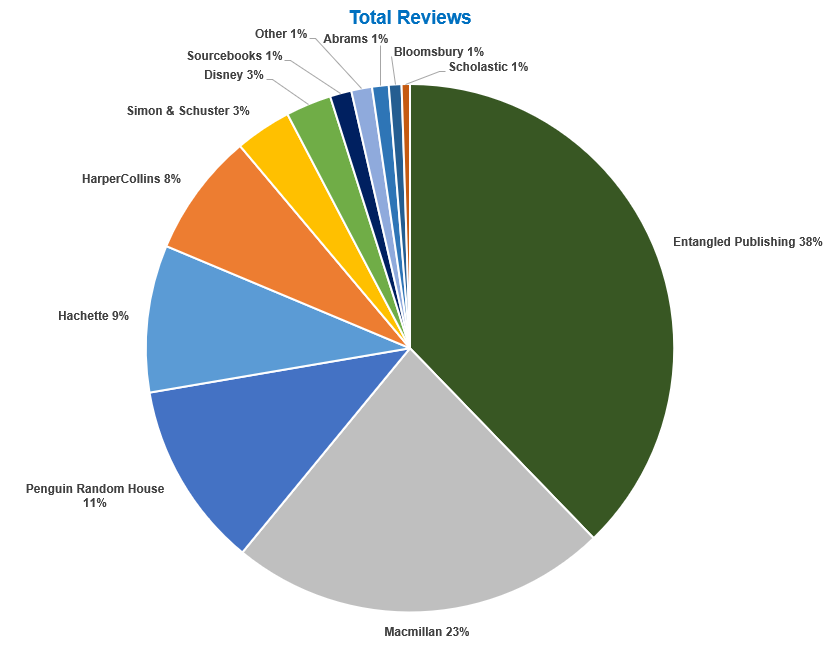
3. What are the most popular YA genres?
It’s not easy to put some books in only one box when it comes to genre (e.g. my new book Valor Wings is set in a realistic WW2…except for the, you know, dragons). But with that caveat, my attempt to classify genres is below, showing a market heavily dominated by Fantasy and Romance. I didn’t specifically call out the popular hybrid genre “Romantasy,” but it would carve out a 7% wedge from the top two genres, about similar in size to the Mystery and Horror segments. Of course, the mix varies by publisher, with about a third of PRH’s books in the Romance genre vs only 20% Fantasy, while the picture is nearly the opposite at Simon & Schuster (40% Fantasy vs 19% Romance). Again in comparison to Middle Grade, it was interesting to me to see that the Contemporary category that accounts for 42% of MG is much smaller in YA, presumably giving way largely to YA’s Romance category, which is virtually nonexistent in MG. Also, the Fantasy genre is more robust in YA (30% of books) than in MG (21%).
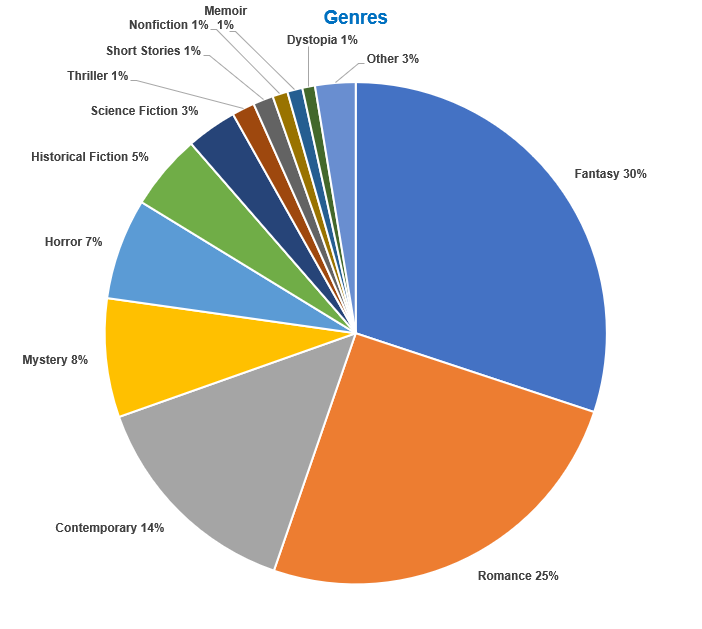
4. What’s your Point of View?
As an author, I’m frequently torn about what POV is the best fit for my story. First Person Present narratives have been quickly growing as a percent of the MG market, which I’ve heard anecdotally is a trickle down from YA, and the chart below lends support to that idea, with more than half of all YA books published in 2023 using the First Person Present POV.
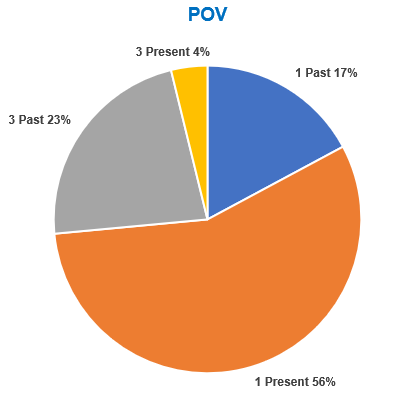
5. How long should my story be?
As an author, I feel like it can be hard to get a straight answer about how long my manuscript should be. So with the caveat that there weren’t a ton of YA books with word counts available (meaning my sample size is pretty small), here’s the average word count for the top genres where the most data was available. Fantasy books predictably were longest overall, with all genres running around 20%+ longer than their younger siblings in MG.
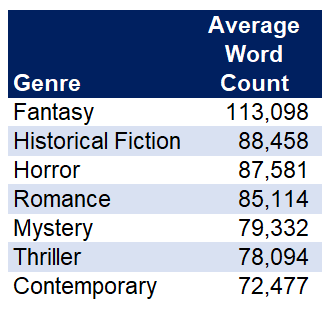
6. What are the genders of YA main characters?
In the charts below, I compare the genders of 2023’s YA main characters to the genders of the authors writing those books. It’s probably again no surprise to see the market dominated by female MCs. This is perhaps another area where we’re seeing YA’s impact on MG, with female MCs in middle grade growing by 5 percentage points to 63% in the past two years. In terms of authors, about 74% of MG books in my most recent data set were written by women, vs 83% female authors in YA.
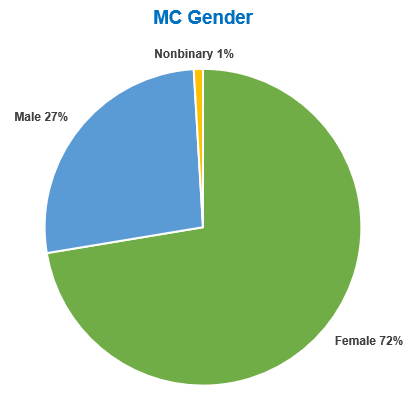
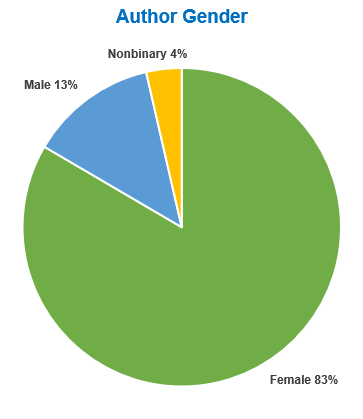
7. When is the best time to publish my book?
Maybe it’s just me, but when I get my book’s release date from my publisher, I typically spend way too much time overthinking what that date means about what my publisher thinks about my book’s chances of success. What other books are releasing around that same time? Am I being relegated to a time of the year when all the duds are released like an ugly Christmas ornament in January?
Okay, so there are a lot of factors that go into a book’s release date, but I found writing coach Sue Coletta’s article on this topic very insightful. And it also tracks pretty well with the chart below showing YA release dates in 2023 by month. In a nutshell: The second quarter of the year (April – June) is one of the best times to release kidlit because you miss the post-Christmas buying slump when readers are back in school, and it lets you build a little momentum going into the summer. There’s a rebound in Sep-Oct driven in particular by scary books before releases fall off a cliff in November and December. Coletta also notes that releases in the first two weeks of a month have some advantages over releases in the last two weeks in terms of Amazon’s bestseller calculations. This played out to some extent in the data, with 56% of titles dropping in the first two weeks vs 44% in the last two weeks of any month.
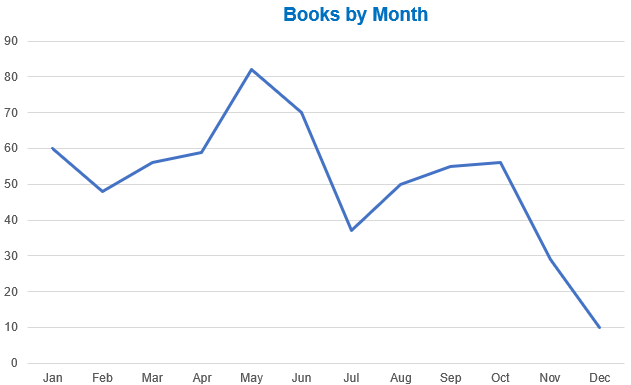
8. Ratings Review
As an author who tries (but mostly fails) to ignore ratings of my books, I’m guilty of comparing my book’s Goodreads rating with its peers in the same genre. The table below shows the average ratings across all of 2023’s YA books in each of the major genres. It’s also an interesting look into how well-received each genre is. Horror, which is second to last in my table, is also among the lowest rated in MG too.
As a point of curiosity, I also compared the number of ratings vs. the number of reviews in each genre. So, for example, Historical Fiction’s 20% means that for every five ratings, one person also leaves a written review. At the risk of picking on Horror, at a genre-high 27%, we can surmise that not only do readers typically not enjoy Horror stories as much, but they want to tell you WHY too.
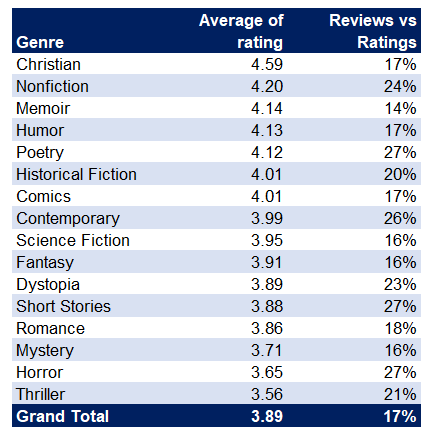
9. How diverse is Young Adult literature?
I’ve loved seeing the explosion of new voices from all different backgrounds and locations around the world telling stories. So I wanted to look at diversity using author race as a measurable (though of course not the only) proxy for that diversification trend. This turned out to be…not as easy as I thought. But after poring through authors’ bios for way too long, I present below my rough approximation of author races for 2023’s YA books (left) and, for a point of comparison, the most recent US racial mix (right) as reported on Census.gov. Note: The census groups “White” and “Arabic” together, but I opted to split them in my chart for more detail. Similarly, census numbers combine “Asian” and “Desi/South Asian,” but again I thought it was more useful to show them separately.
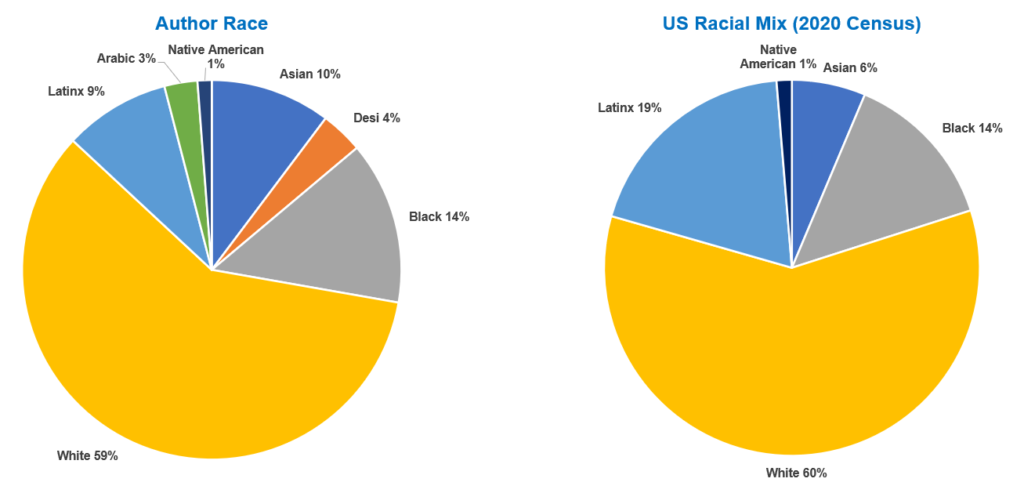
10. What are the hot topics in YA literature?
Finally, I wanted to get an idea of the main topics for this group of books to sort of capture the zeitgeist of YA for 2023. So I collected all the topical tags and ranked them by number of appearances, resulting in the top 10 YA topics for 2023 below:
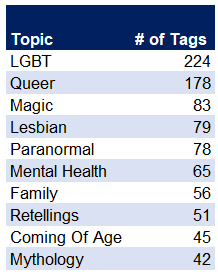
And along the same lines, just for fun I also ranked the top 10 supernatural creatures by topic tags. Will witches continue to cast a spell on readers next year, or will vampires rise again to the top spot?
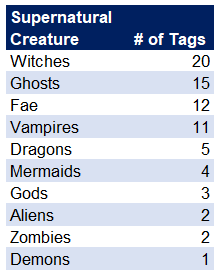
What did you take away from this data?
I love hearing from writers how these numbers helped them, such as one writer who said she gave writing in first person present tense a try and found it unblocked her on a story she’d been stuck on for a long time. If you learned something useful or have questions, please drop me a line!
And again, if you did find some useful tidbits here, please consider checking out my new middle grade VALOR WINGS (Scholastic) that’s WW2 historical fiction with a splash of fantasy that I pitched as “Dunkirk with Dragons.”
Amazon: https://www.amazon.com/Valor-Wings-Sam-Subity/dp/1338885030
Goodreads: https://www.goodreads.com/book/show/202772956-valor-wings
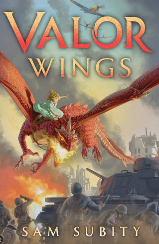
Until next time, happy writing and reading!
